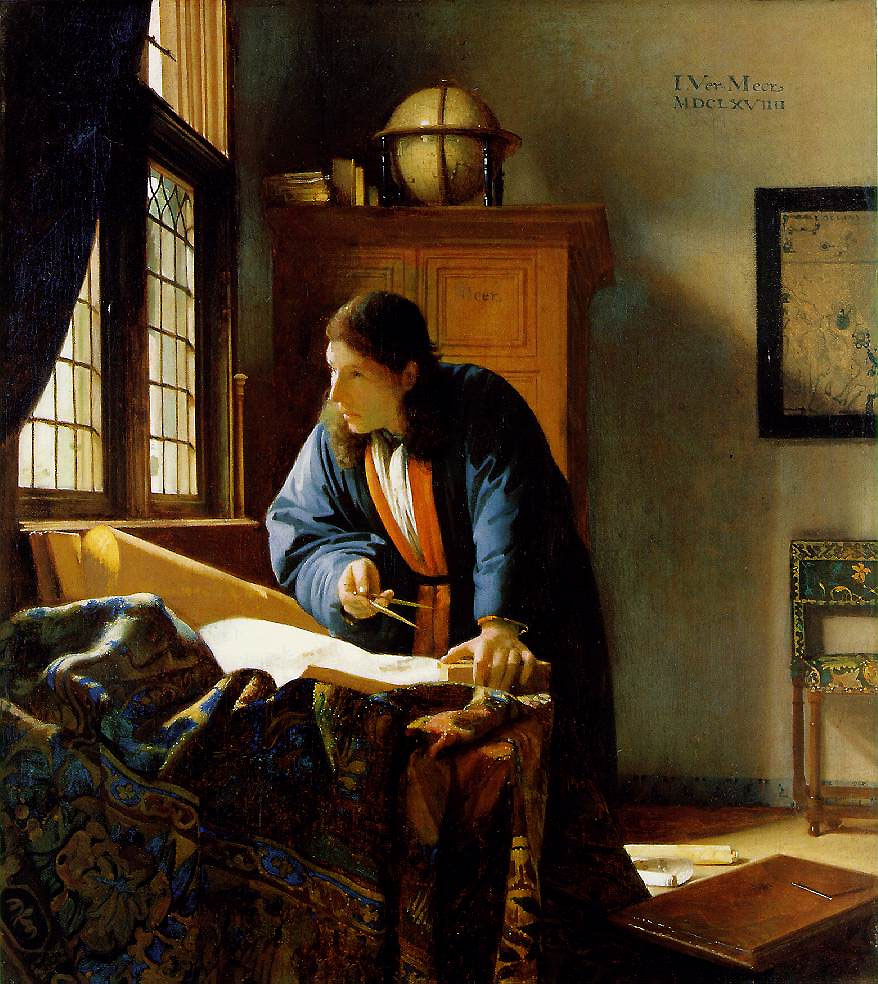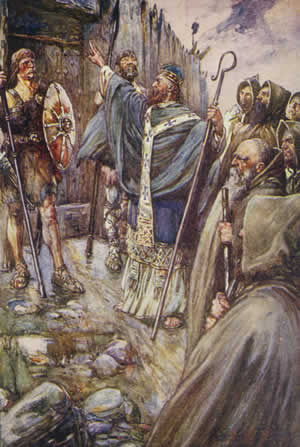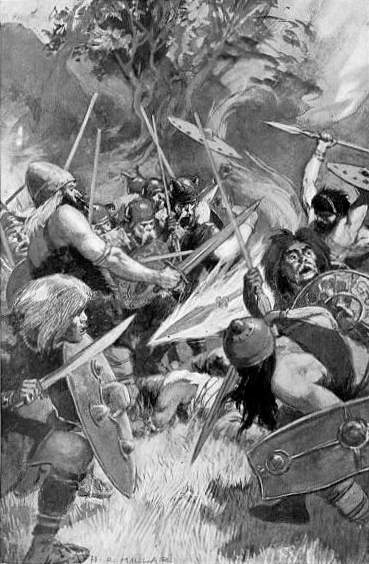|
Lugi
The Lugi were a people of ancient Britain, known only from a single mention of them by the geographer Ptolemy c. 150. from his general description and the approximate locations of their neighbors their territory was along the western coast of the Moray Firth. Ptolemy does not provide them with a town or principal place. Etymology The Pictish name ''Lugi'' probably stems from Proto-Celtic ''*lugos'' ('crow'). A derivation from the Celtic god Lug has also been proposed.Abad, Rubén Abad. (2008). "La divinidad celeste/solar en el panteón céltico peninsular". In: ''Espacio, Tiempo y Forma''. Serie II, Historia Antigua, 21: 101. See also *Lugii The Lugii (or ''Lugi'', ''Lygii'', ''Ligii'', ''Lugiones'', ''Lygians'', ''Ligians'', ''Lugians'', or ''Lougoi'') were a large tribal confederation mentioned by Roman authors living in ca. 100 BC–300 AD in Central Europe, north of the Sude ... References ;Bibliography * {{Iron Age tribes in Britain Historical Celtic people ... [...More Info...] [...Related Items...] OR: [Wikipedia] [Google] [Baidu] |
Lugii
The Lugii (or ''Lugi'', ''Lygii'', ''Ligii'', ''Lugiones'', ''Lygians'', ''Ligians'', ''Lugians'', or ''Lougoi'') were a large tribal confederation mentioned by Roman authors living in ca. 100 BC–300 AD in Central Europe, north of the Sudetes mountains in the basin of upper Oder and Vistula rivers, covering most of modern southern and middle Poland (regions of Silesia, Greater Poland, Mazovia and Lesser Poland). Most archaeologists identify the Lugians with the Przeworsk culture, which is also associated with the Vandals, and it has been suggested that the Lugians and Vandals may have been closely related or even the same. While this culture was strongly Celtic-influenced in early Roman times, the Lugii are also sometimes regarded as Germanic like the Vandals. They played an important role on the middle part of the Amber Road from Sambia at the Baltic Sea to the provinces of Roman Empire: Pannonia, Noricum and Raetia. Lugii should not be confused with a tribe of the sam ... [...More Info...] [...Related Items...] OR: [Wikipedia] [Google] [Baidu] |
Britain
Britain most often refers to: * The United Kingdom, a sovereign state in Europe comprising the island of Great Britain, the north-eastern part of the island of Ireland and many smaller islands * Great Britain, the largest island in the United Kingdom and Europe. Britain may also refer to: Places * British Isles, an archipelago comprising Great Britain, Ireland and many other smaller islands * Roman Britain, a Roman province corresponding roughly to modern-day England and Wales * Historical predecessors to the present-day United Kingdom: ** Kingdom of Great Britain (1707 to 1801) ** United Kingdom of Great Britain and Ireland (1801 to 1922) * Britain (place name) * Britain, Virginia, an unincorporated community in the United States People * Calvin Britain (1800–1862), an American politician * Kristen Britain, an American novelist Other uses * Captain Britain, a Marvel Comics superhero See also * * * Terminology of the British Isles * England * Britains * Britannia * Britis ... [...More Info...] [...Related Items...] OR: [Wikipedia] [Google] [Baidu] |
Great Britain
Great Britain is an island in the North Atlantic Ocean off the northwest coast of continental Europe. With an area of , it is the largest of the British Isles, the largest European island and the ninth-largest island in the world. It is dominated by a maritime climate with narrow temperature differences between seasons. The 60% smaller island of Ireland is to the west—these islands, along with over 1,000 smaller surrounding islands and named substantial rocks, form the British Isles archipelago. Connected to mainland Europe until 9,000 years ago by a landbridge now known as Doggerland, Great Britain has been inhabited by modern humans for around 30,000 years. In 2011, it had a population of about , making it the world's third-most-populous island after Java in Indonesia and Honshu in Japan. The term "Great Britain" is often used to refer to England, Scotland and Wales, including their component adjoining islands. Great Britain and Northern Ireland now constitute the ... [...More Info...] [...Related Items...] OR: [Wikipedia] [Google] [Baidu] |
Geographer
A geographer is a physical scientist, social scientist or humanist whose area of study is geography, the study of Earth's natural environment and human society, including how society and nature interacts. The Greek prefix "geo" means "earth" and the Greek suffix, "graphy," meaning "description," so a geographer is someone who studies the earth. The word "geography" is a Middle French word that is believed to have been first used in 1540. Although geographers are historically known as people who make maps, map making is actually the field of study of cartography, a subset of geography. Geographers do not study only the details of the natural environment or human society, but they also study the reciprocal relationship between these two. For example, they study how the natural environment contributes to human society and how human society affects the natural environment. In particular, physical geographers study the natural environment while human geographers study human society ... [...More Info...] [...Related Items...] OR: [Wikipedia] [Google] [Baidu] |
Ptolemy
Claudius Ptolemy (; grc-gre, Πτολεμαῖος, ; la, Claudius Ptolemaeus; AD) was a mathematician, astronomer, astrologer, geographer, and music theorist, who wrote about a dozen scientific treatises, three of which were of importance to later Byzantine, Islamic, and Western European science. The first is the astronomical treatise now known as the '' Almagest'', although it was originally entitled the ''Mathēmatikē Syntaxis'' or ''Mathematical Treatise'', and later known as ''The Greatest Treatise''. The second is the ''Geography'', which is a thorough discussion on maps and the geographic knowledge of the Greco-Roman world. The third is the astrological treatise in which he attempted to adapt horoscopic astrology to the Aristotelian natural philosophy of his day. This is sometimes known as the ''Apotelesmatika'' (lit. "On the Effects") but more commonly known as the '' Tetrábiblos'', from the Koine Greek meaning "Four Books", or by its Latin equivalent ''Quadrip ... [...More Info...] [...Related Items...] OR: [Wikipedia] [Google] [Baidu] |
Moray Firth
The Moray Firth (; Scottish Gaelic: ''An Cuan Moireach'', ''Linne Mhoireibh'' or ''Caolas Mhoireibh'') is a roughly triangular inlet (or firth) of the North Sea, north and east of Inverness, which is in the Highland council area of north of Scotland. It is the largest firth in Scotland, stretching from Duncansby Head (near John o' Groats) in the north, in the Highland council area, and Fraserburgh in the east, in the Aberdeenshire council area, to Inverness and the Beauly Firth in the west. Therefore, three council areas have Moray Firth coastline: Highland to the west and north of the Moray Firth and Highland, Moray and Aberdeenshire to the south. The firth has more than 800 kilometres (about 500 miles) of coastline, much of which is cliff. Etymology The firth is named after the 10th-century Province of Moray, whose name in turn is believed to derive from the sea of the firth itself. The local names ''Murar'' or ''Morar'' are suggested to derive from , the Gaelic for sea, whi ... [...More Info...] [...Related Items...] OR: [Wikipedia] [Google] [Baidu] |
Pictish Language
Pictish is the extinct Brittonic language spoken by the Picts, the people of eastern and northern Scotland from Late Antiquity to the Early Middle Ages. Virtually no direct attestations of Pictish remain, short of a limited number of geographical and personal names found on monuments and the contemporary records in the area controlled by the kingdoms of the Picts, dating to the early medieval period. Such evidence, however, points strongly to the language being an Insular Celtic language related to the Brittonic language spoken prior to Anglo-Saxon settlement in what is now southern Scotland, England, and Wales. The prevailing view in the second half of the 20th century was that Pictish was a non-Indo-European language isolate, predating a Gaelic colonisation of Scotland or that a non-Indo-European Pictish and Brittonic Pictish language coexisted. Pictish was replaced by – or subsumed into – Gaelic in the latter centuries of the Pictish period. During the reign of Domnall ... [...More Info...] [...Related Items...] OR: [Wikipedia] [Google] [Baidu] |
Proto-Celtic Language
Proto-Celtic, or Common Celtic, is the ancestral proto-language of all known Celtic languages, and a descendant of Proto-Indo-European. It is not attested in writing but has been partly Linguistic reconstruction, reconstructed through the comparative method. Proto-Celtic is generally thought to have been spoken between 1300 and 800 BC, after which it began to split into different languages. Proto-Celtic is often associated with the Urnfield culture and particularly with the Hallstatt culture. Celtic languages share common features with Italic languages that are not found in other branches of Indo-European, suggesting the possibility of an earlier Italo-Celtic linguistic unity. Proto-Celtic is currently being reconstructed through the comparative method by relying on later Celtic languages. Though Continental Celtic presents much substantiation for Proto-Celtic phonology, and some for its morphology (linguistics), morphology, recorded material is too scanty to allow a secure rec ... [...More Info...] [...Related Items...] OR: [Wikipedia] [Google] [Baidu] |
Lugh
Lugh or Lug (; ga, label=Modern Irish, Lú ) is a figure in Irish mythology. A member of the Tuatha Dé Danann, a group of supernatural beings, Lugh is portrayed as a warrior, a king, a master craftsman and a savior.Olmsted, Garrett. ''The Gods of the Celts and the Indo-Europeans''. University of Innsbruck, 1994. p.117 He is associated with skill and mastery in multiple disciplines, including the arts.Monaghan, Patricia. ''The Encyclopedia of Celtic Mythology and Folklore''. Infobase Publishing, 2004. pp.296-297 Lugh also has associations with oaths, truth and the law, and therefore with rightful kingship.Koch, John T. ''Celtic Culture: A Historical Encyclopedia''. ABC-CLIO, 2006. p.1200 Lugh is linked with the harvest festival of Lughnasadh, which bears his name. His most common epithets are ''Lámfada'' ("long hand" or "long arm", possibly for his skill with a spear or his ability as a ruler) and ''Samildánach'' ("equally skilled in many arts"). In mythology, Lugh is the ... [...More Info...] [...Related Items...] OR: [Wikipedia] [Google] [Baidu] |
Historical Celtic Peoples
History (derived ) is the systematic study and the documentation of the human activity. The time period of event before the invention of writing systems is considered prehistory. "History" is an umbrella term comprising past events as well as the memory, discovery, collection, organization, presentation, and interpretation of these events. Historians seek knowledge of the past using historical sources such as written documents, oral accounts, art and material artifacts, and ecological markers. History is not complete and still has debatable mysteries. History is also an academic discipline which uses narrative to describe, examine, question, and analyze past events, and investigate their patterns of cause and effect. Historians often debate which narrative best explains an event, as well as the significance of different causes and effects. Historians also debate the nature of history as an end in itself, as well as its usefulness to give perspective on the problems of the p ... [...More Info...] [...Related Items...] OR: [Wikipedia] [Google] [Baidu] |
Picts
The Picts were a group of peoples who lived in what is now northern and eastern Scotland (north of the Firth of Forth) during Late Antiquity and the Early Middle Ages. Where they lived and what their culture was like can be inferred from early medieval texts and Pictish stones. Their Latin name, , appears in written records from the 3rd to the 10th century. Early medieval sources report the existence of a distinct Pictish language, which today is believed to have been an Insular Celtic language, closely related to the Common Brittonic, Brittonic spoken by the Celtic Britons, Britons who lived to the south. Picts are assumed to have been the descendants of the Caledonians, Caledonii and other British Iron Age, Iron Age tribes that were mentioned by Roman historians or on the Ptolemy's world map, world map of Ptolemy. The Pictish kingdom, often called Pictland in modern sources, achieved a large degree of political unity in the late 7th and early 8th centuries through the expa ... [...More Info...] [...Related Items...] OR: [Wikipedia] [Google] [Baidu] |







.jpg)